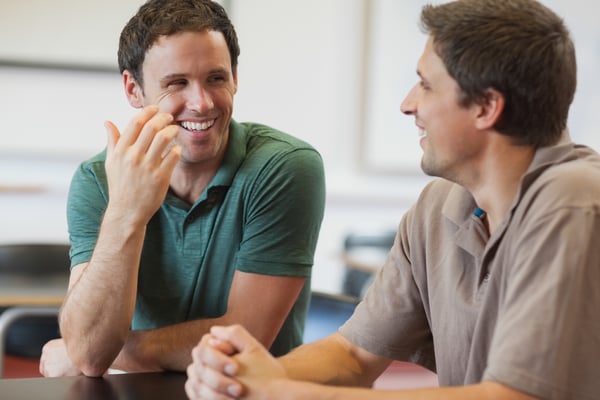Published on
Customer Service and Non-Traditional Higher Ed: Committing to the Concierge Model

The following interview is with Lisa R. Braverman, chief academic officer at Jones International University. At the recent University Professional and Continuing Education Association’s Marketing and Enrollment Management Seminar, Braverman presented on the concierge model and value of customer service to retention of non-traditional students. This topic, and the wider theme of customer service as essential in today’s higher education environment, is gaining a great deal of attention as more and more students, especially non-traditional students, begin to consider choosing a higher education institution along the same lines as making a major purchase. In this interview, she discusses the concierge model and the customer service imperative, and shares her thoughts on what the future holds for customer service in higher ed.
1. What is the concierge model?
The concierge model of customer service—which should more aptly be named student service for universities—really emanates from private industry, the tourism industry more specifically. If you’re in a hotel, the concierge is the face of the hotel for customers. They can guide customers according to what their needs are, they can create an experience that is seamless, they problem solve.
Universities are looking at ways that they can be more customer-friendly and more attuned to individual and specific needs, particularly those of non-traditional learners; that’s the model that they are basing it on.
2. Why is the concierge model, with its driving theme of focusing on customer service excellence, so critical to attracting and retaining non-traditional students?
The research is showing that when non-traditional learners try to re-enter and come back to school, there are myriad issues that they must overcome. They’re complex and have to do with family, with state of health, employment, status, age, et cetera.
When non-traditional learners try and come back, they find what feels to them like a labyrinth, an endless journey of being bounced around from office to office, not getting the information that would really help them. They are quite unlike the traditional learners. They often bring lots of prior study with them and they really do need folks who are trained in their issues to help steward them and not waste their time towards completing. They really are education consumers.
3. How do you see the importance of delivering high-touch customer service evolving in the postsecondary space over the next 10 years?
There have been some very exciting developments in this space. These involve predictive analytics and include an approach that is very data-driven. It’s a fascinating, groundbreaking strategy to really tracking and monitoring students throughout their lifecycle with the university, through their course of study. Its aim is to watch where they succeed and where they fall down, both in groups and individually, such that course sequences, services and interventions by course tutors and by faculty primarily can be more purposeful and actually show results in terms of retention, (what is nowadays referred to as persistence) and completion for these learners. This, again, is delivering far better services, interventions and guidance, which the metrics show are yielding increasing numbers of graduates, which is what we all want. The contrary to that is that you get the adults that try and come back, they hit the wall and, regrettably, sometimes these conditions can be so negative that they just give up and don’t come back. The state of the art is really predictive analytics and using data to help us get a lot of information about these learners that we can in turn supply back to faculty, to the administrators, to the institutions and even to the students so that collaboratively you have higher rates of satisfaction.
4. Is there anything you’d like to add about the importance of data-driven customer service and student service when it comes to increasing that graduation rate and supporting students through not only their academic careers but even bringing them back as lifelong learners?
In a study done by the Council for Adult and Experiential Learning (CAEL) called “ALFI”—Adult Learning Focused Institutions—they found that there were about eight or nine specific characteristics shared by institutions that are able to show higher levels of success and graduation rates based upon how they serve students. We see that it is data-driven; we see that it is also a higher level of understanding of the particular experiences that adults bring back to the classroom. We’ve known about that for years, but it’s only recently that folks are pointing out that the pedagogy on the part of faculty needs to adapt to the learning styles of these students.
It’s been transformative, perhaps not enough. We see some star institutions that are really head and shoulders above the others, but regrettably we still see a lot of other institutions that are late joiners in this process, or in some cases, that do not join at all. It makes a difference personally and also in terms of regional economy when adult students have better wages, can put food on the table, can take care of their household, are healthier and can contribute to a more robust local economy. Universities, unfortunately, sometimes don’t really see their role in the supply chain of the domestic economy. If anything I’d love to see more advocacy work and more work in this regard.
This interview has been edited for length.
Author Perspective: Administrator


